Deltoid Muscle
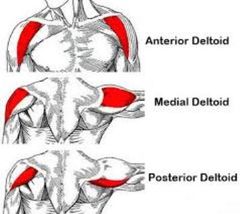
The deltoid muscle is divided into the anterior, middle and posterior which surround the shoulder joint. It is a large muscle extending from the collar bone to the outer upper arm, and is used to lift the arms out in front and to the sides, as well as helping to stabilise the shoulder joint.
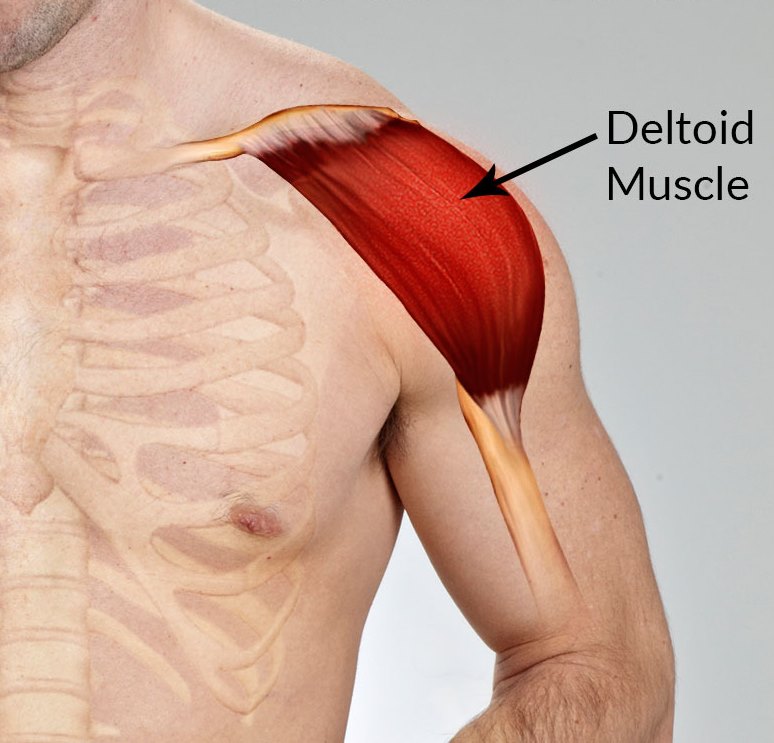
RISK FACTORS:-
• more common in athletes who use the shoulder repetitively eg.weight lifting, swimming,skiing.baseball, where overextension of the deltoid can occur
• bodybuilders may focus a whole workout on shoulders causing over-use
• A fall or sudden injury that jars/dislocates the shoulder joint can damage the deltoid muscle
• Occupations involving repeated arm movements overhead eg. mechanics, construction workers
CAUSES:-
• overuse of the muscle
• forced eccentric contraction of the shoulder (lengthening of the muscle belly while contracting) (ie negative weight lifting reps)
• direct traumatic blow to the shoulder eg.dislocation, car accident
• axillary nerve Issues – axillary nerves stimulate the deltoid muscle when using the shoulder and arm, so damage to these nerves affect muscle function possibly with numbness/weakness over the outer shoulder
• trigger points – may result in referred pain that seems to be in the deltoid region but stems from elsewhere.
Deltoid Muscle Strain Grading & Symptoms:-
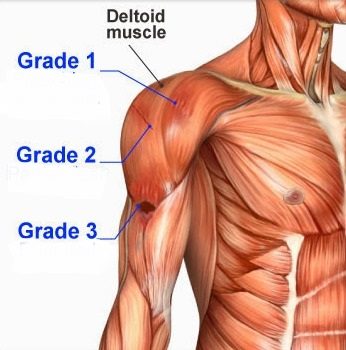
Grade I :-
• a minor tear of the muscle (10% of the muscle fibres) • causes mild pain in the shoulders
• generally able to use shoulder for activities without much difficulty/ pain • minimal/no swelling
• increased pain when bearing extra weight in the arms
• shoulder/outer arm feels achy and tight for 2-5 days after the injury
• recovery is 7- 10 days
Grade II :-
• partial tearing of the deltoid muscle (over 50% of the muscle fibres)
• usually a result of a major injury
• may be partial rupture of the muscle
• sharp shoulder pain
• increased pain on pressing finger into the deltoid muscle
• reduced range of motion/difficulty using shoulder for daily activities
• mild-moderate swelling of the shoulder
• weakness/difficulty lifting arm to the front/side/back
• difficulty/pain carrying a small load
• difficulty doing push ups • shoulder/outer arm feels achy and tight for a least a week after injury
• recovery about 4 - 6 weeks
Grade III:-
• complete rupture of the muscle(over 90%)
• immediate, very severe pain
• inability to use the shoulder for any activity
• considerable bruising and swelling • unable to move arm
• slight flex of the muscle may produce a bulge
• contracting the muscle will be very painful
• shoulder/outer arm feels achy and tight for about 30 - 35 days
• recovery about 3 – 4 months
• muscle spasms
• popping noise/snapping sensation – at time of injury
TREATMENT:-
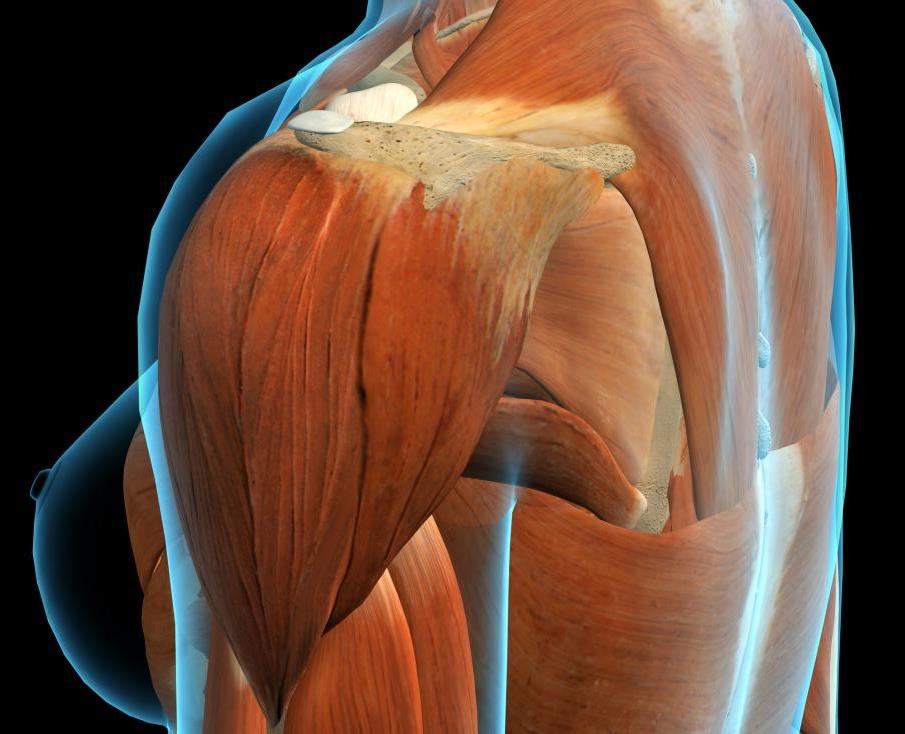
Grade I – usually requires little treatment,
- rest
- ice
- compression
- elevation
- anti-inflammatories
Grade II – as with Grade I - some physical therapy may help reduce pain and increase motion and strength
Grade III - as with Grade II but with more physical therapy and restricted activities
After pain and swelling are reduced, ice treatment can be replaced with heat, usually 1-5 days after injury. Gentle stretching can then be introduced . Due to the difficulty in resting the arm/shoulder, healing can take a long time and re-injury is common due to returning to work/sports too early. This can damage muscle function more permanently.
The aim of treatment is to prevent further damage, formation of scar tissue and muscle atrophy in order to restore strength and function.
RECOVERY :-
Return to sport may take anything from a couple of days to months later, depending on the grade of strain. In terms of competitive sports, the athlete must have regained full strength and range of motion, be pain free, and have completed sport specific exercises.
EXERCISES:-
Recovery stretches for grade I or higher grades once pain and swelling have subsided:-
• Pull and hold your arm across your chest for 10 to 30 seconds
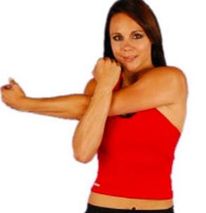
• Clasp hands behind your back and stretch out your arms behind you. Hold for 10 to 30 seconds
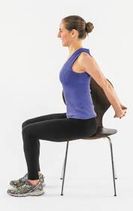
• isometric resistance exercises, eg. pressing your hands into a wall Then progress to the following exercises , initially with low weight dumbells or resistance bands, to improve flexibility and strength. These can also be used generally to strengthen the deltoid muscle in order to prevent injury in the future.
EXTERNAL SHOULDER ROTATIONS
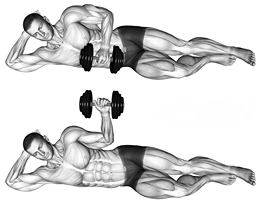
-work the medial and posterior deltoid muscles, which stabilise the head of the humerus in the joint. • lay on side with affected arm on top, hold the dumbbell with elbow against the hip and forearm held across the stomach. Lift the dumbbell off the ground by rotating the shoulder and lifting the forearm off the stomach. Bring the dumbbell slowly to the ground and repeat.
INTERNAL SHOULDER ROTATIONS
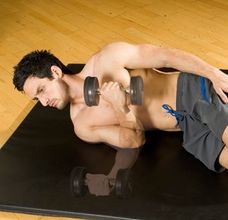
-works the anterior deltoid muscle • lay on side with affected arm nearest the floor, place the elbow and upper arm close to the body with elbow bent at 90 degrees and the dumbbell on the floor. Lift the dumbbell up by rotating the shoulder joint until forearm touches the body. Slowly lower the weigh to the floor and repeat.
LATERAL RAISES
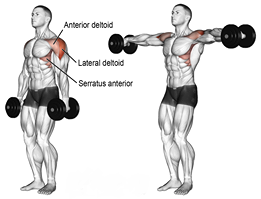
Stand while holding dumbbells in front of the legs with both palms facing each other. Raise both dumbbells to the side until hands are at shoulder level with palms facing down. Return to start position and repeat.
ALTERNATING FRONT RAISES
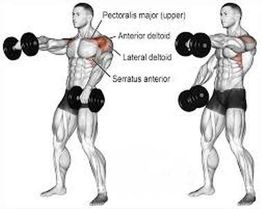
-useful in rehabilitation of the anterior or medial deltoid Stand while holding dumbbells in front of the legs, palms facing the body and lift one extended arm to shoulder height. Return to the start position. Lift the opposite extended arm to shoulder height.
